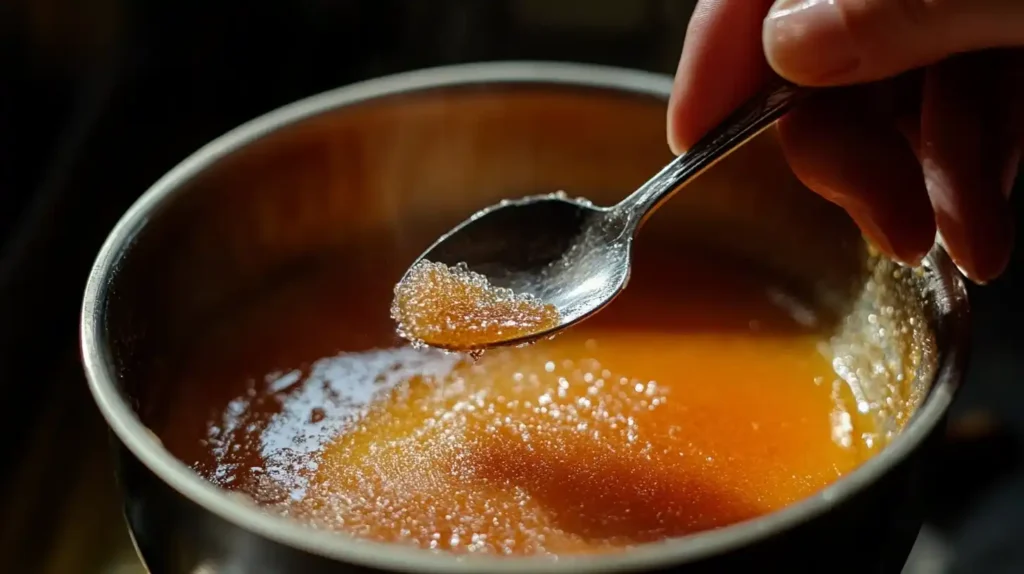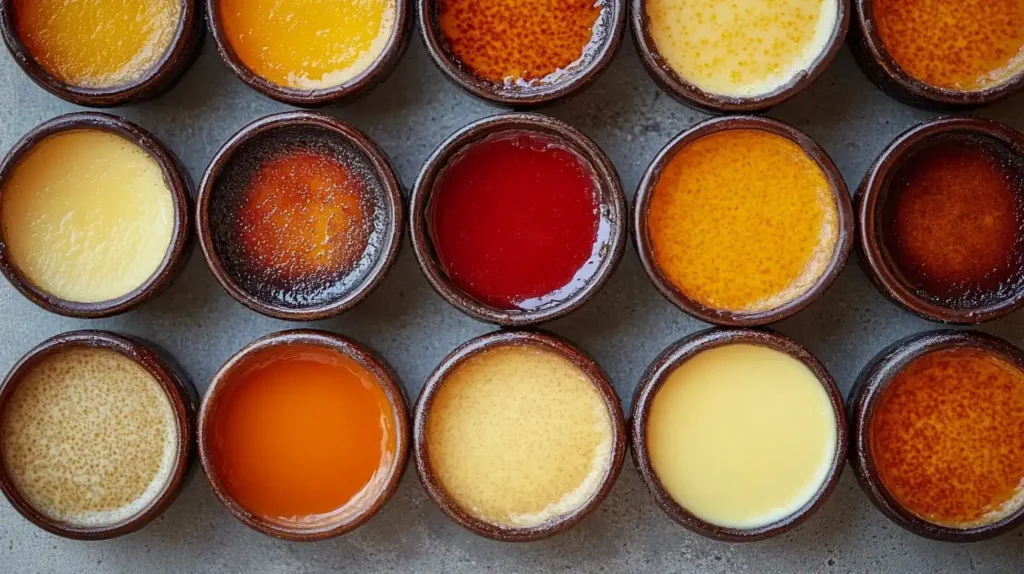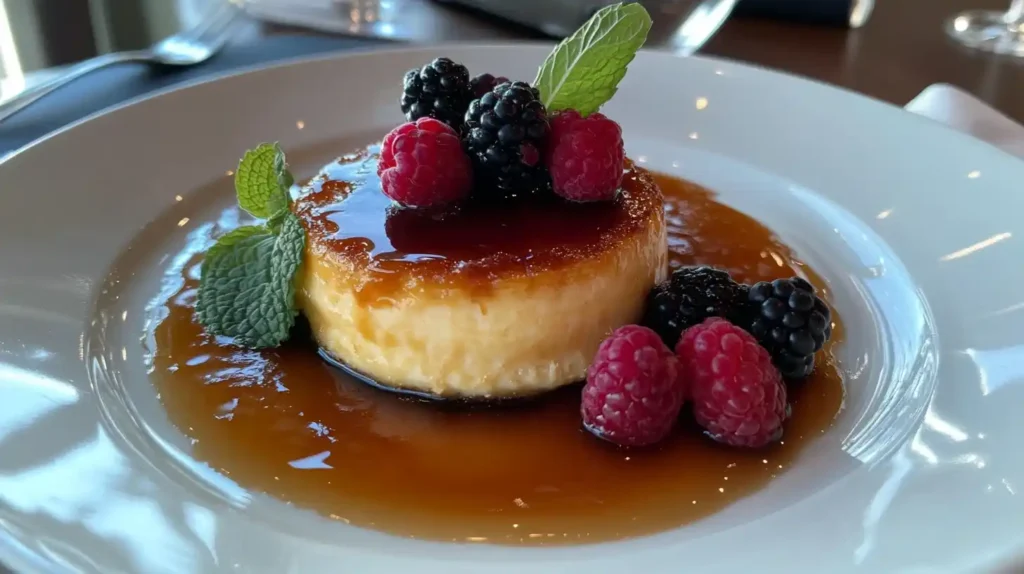What does brûlée taste like? This question sparks curiosity for anyone unfamiliar with this iconic dessert. Brûlée, typically referring to crème brûlée, features a creamy custard base with a caramelized sugar topping, offering a distinctive contrast of textures and flavors. Whether you are new to this dessert or already a fan, understanding what brûlée tastes like adds a new layer of appreciation.
What does brûlée taste like? When you take your first bite, you immediately notice how the contrasting textures come together. The brûlée texture is a key part of its appeal the custard feels soft and velvety, while the caramelized sugar topping delivers a satisfying crunch and a hint of bitterness. These layers harmonize to create a balance of sweet, creamy, and slightly burnt notes, defining the flavors of brûlée. Whether you’re experiencing it for the first time or have enjoyed it before, understanding what brûlée tastes like deepens your appreciation for this classic dessert.
Table of contents

The Unique Flavor of Crème Brûlée
When considering the taste of brûlée, the rich and creamy custard base is the first thing that comes to mind. Its soft, velvety texture melts in your mouth, offering a comforting sweetness, often enhanced by vanilla. On the other hand, the caramelized sugar topping delivers a crisp crunch and a slightly bitter edge, perfectly contrasting the custard’s rich sweetness. These components combine to create the distinctive flavor of brûlée.
The Creamy Custard Base: Defining the Brûlée Texture (brûlée texture, flavors of brûlée)
Taste of brûlée Crème brûlée stands out for its remarkable adaptability. The basic recipe remains simple, but subtle changes can enhance the flavors of brûlée, offering a new experience with each variation. Whether you enjoy the classic vanilla version or experiment with unique ingredients like chocolate, citrus, or spices, the brûlée texture stays the same silky custard beneath a crisp, caramelized sugar layer. This contrast defines what brûlée tastes like, making it a dessert that continues to captivate and satisfy with every bite.
The Caramelized Sugar Topping: A Signature in Brûlée Flavors (what brûlée tastes like, brûlée flavors)
Flavors of brûlée The defining feature of crème brûlée is its caramelized sugar topping. By melting and hardening the sugar with a torch, the dessert develops its signature crisp layer, adding depth to the taste of brûlée. This delicate balance between the brûlée texture a smooth, creamy custard beneath a crunchy sugar crust creates an unforgettable experience. The contrast of flavors and textures is what makes what brûlée tastes like so unique and satisfying.
For more desserts that play with textures, consider exploring this guide to Cinnabuns, which offers a similar indulgent experience in a completely different form.
Comparing Crème Brûlée to Other Desserts: Understanding What Brûlée Tastes Like?
Brûlée flavors Crème brûlée often shares the stage with other beloved desserts like flan and cheesecake. While each has its own unique qualities, crème brûlée stands out due to its signature brûlée texture a silky custard base topped with a crisp, caramelized sugar layer. The contrast between these textures enhances the taste of brûlée, creating a delicate balance of creamy richness and subtle caramel notes. Comparing these desserts highlights what brûlée tastes like and why it remains a timeless favorite.
Crème Brûlée vs. Flan
At first look, crème brûlée and flan might appear alike. Both are custard-based desserts that are soft and creamy. However, their toppings create very different eating experiences.
- Flan’s Topping: Flan is topped with a soft caramel sauce that spreads over the dessert when served. This syrup adds sweetness but lacks the textural contrast that crème brûlée offers.
- Crème Brûlée’s Topping: In contrast, crème brûlée features a caramelized sugar crust. This layer is torched to create a hard, glassy surface. When cracked with a spoon, it delivers a delightful crunch that contrasts with the creamy custard underneath.
Additionally, flan has a slightly lighter and more jiggly consistency, while crème brûlée’s texture feels denser and silkier. Moreover, the caramel in flan tends to be sweeter, while the burnt sugar in crème brûlée introduces a hint of bitterness that balances its sweetness.
Crème brûlée offers a multi-sensory experience first the crunch of the topping, then the creaminess of the custard. On the other hand, flan’s smooth consistency makes it feel more like a pudding. If you enjoy dynamic textures, crème brûlée is the clear winner.
Crème Brûlée vs. Cheesecake
While crème brûlée and cheesecake are both rich and creamy, they are quite different in taste and texture.
- Cheesecake’s Texture: Cheesecake is dense and heavy because it uses cream cheese as a base. The crumbly crust provides a contrast, but it lacks the lightness found in crème brûlée’s custard.
- Crème Brûlée’s Texture: On the other hand, crème brûlée’s custard is much lighter. It feels silky on the palate, and the caramelized sugar topping adds a crisp bite that cheesecake cannot replicate.
Flavor-wise, cheesecake is often tangy due to the cream cheese, while crème brûlée is sweet with subtle notes of vanilla. This makes crème brûlée a less overpowering choice for those who prefer delicate desserts.
Another key difference lies in their serving styles. Cheesecake is typically sliced into portions, while crème brûlée is served in individual ramekins. This makes crème brûlée feel more personalized and elegant.
Which Dessert Should You Choose?
Your choice depends on what you’re craving:
- If you want a dessert that is light, creamy, and slightly crunchy, crème brûlée is the perfect pick.
- If you prefer something denser with a tangy flavor, cheesecake might suit your taste better.
- For those who love caramel but prefer a smoother texture, flan is an excellent alternative.
The beauty of crème brûlée lies in its ability to balance simplicity with sophistication. It is rich but not heavy, sweet but not cloying, and its combination of textures keeps every bite exciting.
Variations of Crème Brûlée: Diverse Brûlée Flavors to Savor (brûlée flavors)
What brûlée tastes like can vary depending on its flavoring. While the classic vanilla version remains the most popular, creative adaptations like citrus, lavender, or even savory options bring exciting twists to the table.
If you love experimenting with flavors, you might also enjoy these buckwheat flour recipes, which offer a healthier take on baked goods.

Classic Vanilla Crème Brûlée: The Quintessential Brûlée Texture (brûlée texture, what brûlée tastes like)
First, let’s revisit the original. The classic version uses vanilla as its main flavoring, resulting in a dessert that is both simple and elegant. The vanilla provides a subtle sweetness that complements the burnt sugar topping perfectly. This traditional version remains a favorite because of its timeless appeal.
Chocolate Crème Brûlée: Indulge in Rich Brûlée Flavors (brûlée flavors)
What brûlée tastes like For those who love richer desserts, chocolate crème brûlée is an irresistible option. This variation enhances the flavors of brûlée by incorporating melted chocolate into the custard, giving it a deeper, more decadent taste and a velvety brûlée texture. The slight bitterness of the chocolate complements the caramelized sugar layer, creating a perfect balance of sweetness and richness. This twist on the classic dessert showcases how the taste of brûlée can be adapted to satisfy different flavor preferences while maintaining its signature contrast of textures.
Citrus Crème Brûlée: A Zesty Twist on What Brûlée Tastes Like (what brûlée tastes like, flavors of brûlée)
If you prefer desserts with a zesty kick, citrus-flavored brûlée offers an excellent choice. By infusing flavors like orange, lemon, or lime into the custard, this variation delivers a refreshing tang. The bright citrus notes elevate the dessert, making it feel lighter and more invigorating. Many people find this option especially appealing during summer or after a rich, heavy meal.
Lavender or Floral Crème Brûlée: Delicate Brûlée Flavors for the Adventurous (brûlée flavors)
Floral variations like lavender crème brûlée bring a subtle, aromatic twist to the classic dessert. The delicate flavor of lavender adds a unique fragrance without overpowering the dish. Similarly, other floral notes like rose or elderflower can create a sophisticated dessert that feels luxurious and memorable.
Seasonal and Creative Variations: Experimenting with the Taste of Brûlée (taste of brûlée)
Crème brûlée can also reflect the seasons or special occasions:
- Pumpkin Spice Crème Brûlée: Perfect for autumn, this version blends spices like cinnamon, nutmeg, and cloves into the custard.
- Matcha Crème Brûlée: Green tea powder adds earthy notes and vibrant color, appealing to fans of matcha.
- Salted Caramel Crème Brûlée: A modern twist that incorporates a touch of sea salt for a sweet-and-salty flavor.
Why Experiment with Crème Brûlée?
Taste of brûlée One of the greatest qualities of crème brûlée lies in its adaptability. While the basic recipe remains simple, even slight changes can enhance the flavors of brûlée, turning it into a completely new experience. Whether you prefer the classic vanilla-infused custard or experiment with bold variations like citrus, coffee, or spices, the signature brûlée texture remains key silky smooth custard beneath a crisp, caramelized sugar topping. No matter the flavor, the unique contrast defines what brûlée tastes like, ensuring every bite is both delightful and satisfying.
Tips for Enjoying Crème Brûlée
Crème brûlée is a dessert best enjoyed with the right techniques and pairings. While it is already delicious on its own, a few thoughtful touches can elevate the experience. Whether you are eating it at a restaurant or making it at home, these tips will help you savor every bite.
Serve Crème Brûlée Fresh
To begin with, crème brûlée is best when served fresh. The caramelized sugar topping is at its crunchiest right after it has been torched. If left for too long, the topping can soften due to moisture from the custard. For this reason, it is important to prepare and serve it close to the time of consumption.
- Tip: Always caramelize the sugar just before serving to preserve its crispness.
Pair with Complementary Drinks
Another way to enhance the flavor of crème brûlée is by pairing it with the right beverages. The dessert’s sweetness pairs well with drinks that balance its richness. For example:
- Coffee or Espresso: The bitterness of coffee complements the sweetness of crème brûlée.
- Herbal Teas: Light teas like chamomile or mint add a refreshing contrast.
- Non-Alcoholic Sparkling Drinks: Bubbly beverages cleanse the palate, making each bite feel fresh.
Try Homemade Crème Brûlée
Making crème brûlée at home can be both fun and rewarding. It allows you to customize the dessert with your favorite flavors, such as chocolate, citrus, or lavender. Plus, the process of torching the sugar adds an interactive and satisfying step.
- Tip: Use a kitchen torch for the best results when caramelizing sugar. While broilers can work, they often heat unevenly.
Savor Each Bite
When eating crème brûlée, take your time to enjoy the contrast between the creamy custard and crunchy topping. Break the sugar crust gently with a spoon, allowing the textures to mix in every bite. This method ensures you experience the dessert as it was intended.
Experiment with Garnishes
Lastly, consider adding garnishes to your crème brûlée. While the dessert is delightful on its own, a few additions can make it even more exciting. Fresh berries, edible flowers, or a dollop of whipped cream can add color and flavor.
Why These Tips Matter
By following these tips, you can fully appreciate what brûlée tastes like and what makes it so special. The perfect balance of creamy custard and crisp, caramelized sugar is best enjoyed when served fresh, paired thoughtfully, and eaten mindfully. Whether savoring the brûlée texture at home or indulging in it at a fine dining restaurant, these small steps enhance the overall experience, allowing you to truly enjoy the rich and delicate taste of brûlée.
Frequently Asked Questions
When it comes to crème brûlée, many people have questions about its taste, texture, and preparation. Here, we’ll address the most common queries to help you better understand this classic dessert.
What Does Crème Brûlée Taste Like?
Crème brûlée has a rich, creamy flavor with hints of vanilla. The custard is sweet and smooth, while the caramelized sugar topping adds a slight bitterness and a satisfying crunch. Together, these elements create a balance that is both indulgent and light.
Does Crème Brûlée Taste Like Flan?
Although both are custard-based desserts, crème brûlée and flan taste quite different. Flan is lighter and topped with a soft caramel sauce, which gives it a uniform texture. On the other hand, crème brûlée’s crunchy sugar topping provides a contrast that flan does not have. If you enjoy texture contrasts, you may prefer crème brûlée.
What Flavor is Similar to Crème Brûlée?
Desserts like caramel custard or panna cotta may taste somewhat similar to crème brûlée. However, they lack the signature crunchy sugar topping that sets crème brûlée apart. These desserts share the same creamy consistency but offer fewer layers of texture.
How Should Crème Brûlée Be Served?
Crème brûlée should always be served chilled, but its caramelized sugar topping must be freshly torched. The cool custard contrasts beautifully with the warm, crispy topping, creating the perfect balance of temperatures and textures.
Can Crème Brûlée Be Refrigerated After Torching?
While the custard can be made in advance and stored in the refrigerator, the sugar topping should not be caramelized until just before serving. If stored after torching, the topping may lose its crunch due to moisture absorption.
Why Does My Crème Brûlée Taste Bitter?
Crème brûlée can taste bitter when the sugar topping is over-torched. While a slight bitterness enhances the dessert by balancing its sweetness, excessive burning overwhelms the custard’s delicate flavor. To avoid this, carefully torch the sugar until it melts and forms a golden-brown crust, stopping before it darkens too much. This ensures the topping adds depth without overpowering the dessert.
Is Crème Brûlée Gluten-Free?
Yes, traditional crème brûlée is naturally gluten-free. It uses only cream, eggs, sugar, and vanilla, making it a safe option for those with gluten sensitivities. However, always check for added flavorings or garnishes that may contain gluten.
What’s the Best Way to Crack the Sugar Topping?
The best way to crack the sugar topping is by using the back of a spoon. Gently tap the surface to break the hardened sugar layer, allowing you to enjoy both the crunchy and creamy layers together in every bite.
These FAQs cover some of the most common curiosities about crème brûlée. Whether you are planning to make it at home or try it at a restaurant, understanding these details will enhance your experience.
Conclusion
Ultimately, understanding what brûlée tastes like means appreciating its balance of creamy and crunchy textures. Whether you enjoy it in its classic form or experiment with bold variations, the flavors of brûlée consistently deliver a delightful dessert experience. So, next time you have brûlée, savor its rich taste and think about what makes it so unforgettable.
This dessert continues to attract fans because of its versatility. You can savor the classic vanilla flavor or experiment with creative variations like chocolate, citrus, or lavender. Each version offers new flavors while keeping the dessert’s signature elements intact.
Crème brûlée fits effortlessly into nearly every occasion, from formal dinner parties to casual nights at home. Pair it with a drink like coffee or tea to balance its sweetness, or add garnishes like fresh fruit for an extra touch of elegance.

Ultimately, crème brûlée offers more than a delicious taste it provides a complete sensory experience. The creamy custard and crispy sugar topping deliver satisfying contrasts in every bite. When you prepare it fresh and enjoy it mindfully, you experience everything this iconic dessert brings to the table.

